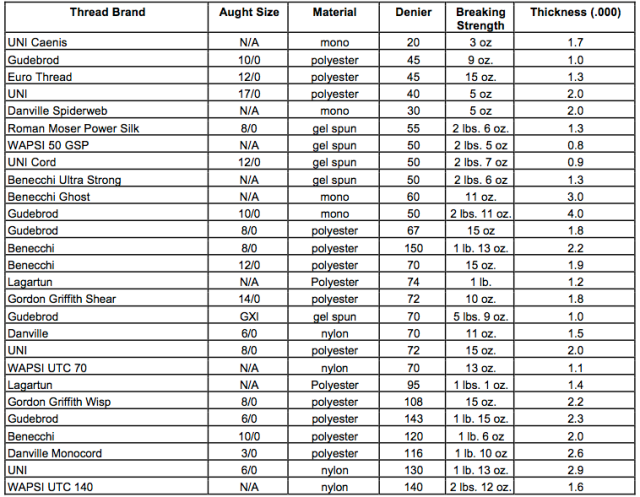Gaeronf posted this back in September 2012.
A Beginner's Guide To Fly Tying Thread #1
Recently I have seen on multiple different forums a lot of people just starting to get in to fly tying. I wrote this up because I figured it would help at least some people.
Starting out fly tying can be very stressful. There are so many things to think about when first getting started; What hooks should I buy, what brand tools should I use, what vise should I get, but one question that is overlooked a lot of times is "what thread should I use?" Thread, at first glance, is really quite simple. It's just thread, right? Wrong. Threads come in all different colors, sizes, strengths, and textures. Thread is a topic that could be elaborated on, explored, and discussed about for pages and pages, but this post will cover just a brief overview. Many often underestimate or overestimate the importance of thread. Beginners will often not take enough care in thread size and type, and will often go crazy in regards to color. The main topics that we will be discussing are flat thread, bonded thread, GSP thread, size selection, and color selection.
Flat Thread
Flat thread is great for many different things. It's flat properties allow it to cover more of the hook shank with less wraps making it an all around "more efficient" thread. This also means it will build up less bulk as you wrap, allowing you to make more slender, realistic abdomens for your flies. But, this also comes in handy when tying smaller flies, when quick buildup is detrimental. The slow buildup creates a nicer finish when adding hot-spots in flies, or finishing a fly behind a bead. The flat aspect will also allow you to make extremely smooth under-bodies that are needed for woven bodies, floss bodies, and quill bodies. Flat thread in general can be split easily (by fingernail, needle, etc.) for split-thread dubbing techniques. On the down side, flat thread will fray a little bit more easily on the hook point than bonded threads. There are many brands out there for thread, but I recommend UTC Ultra Thread. It comes in many different sizes and many different colors, which will be discussed later in the post.
Bonded Thread
Bonded thread, in my opinion, is quite useful but has less of a place reserved on my bench that flat thread. Bonded thread is typically stronger, and does not fray or break as easily as flat thread on the hook point. If you look at a "cross section" of both threads, you can see that flat threads look like a straight line, but bonded threads look more like an oval. By this, you can easily make the conclusion that bonded thread will not create as smooth as a finish and it will build up much more quickly. This is both a positive and a negative, depending on your purpose. The oval shape allows you to use bonded thread for a ribbing material, and even segmented bodies. It builds up quickly, which is nice if you need to make a bulky (and not necessarily smooth) underbody for a fly. It's great for covering up lead, and the cord like properties naturally make it more "grippy" and it holds/secures materials very well. Although split thread techniques can be used with this thread, it is extremely difficult and I would not recommend the split thread techniques with this type of thread.
Just like the flat thread, there are a multitude of bonded thread manufacturers, but I recommend UNI-Thread. It also comes in a ton of different colors, and a lot of different sizes.
GSP Thread
GSP is not a different "shape" (flat/bonded) thread, but is a thread that is manufactured a little differently. GSP stands for gel spun polyethylene. It is approximately two times as strong as Kevlar, at the same diameter. These threads are a very useful tool in a fly tier's arsenal, so it is deemed appropriate to discuss them now. GSP threads can be used in very fine sizes and still remain extremely strong. A couple things to not first, they are extremely slick. You typically can not "cut" this thread with your scissors; typically a slicing motion is needed. Continuing off that statement, when starting a fly, a base of super glue or adhesive is heavily recommended. These threads do have their place though. Their most practical uses include bass bugs, large streamers, and egg flies. Their implications are really for when "Cranking down" is a necessity. The small sizes (50 denier) are remarkably stronger than any other type of thread close, so they are extremely helpful when tying slender flies. There aren't as many GSP manufacturer, but my top 2 brands I would recommend are Ultra GSP Thread, and UNI-Cord (GSP).
If you feel so inclined to read about size and color selection, you can read that here.
Posted on: 2012/9/23 16:31





